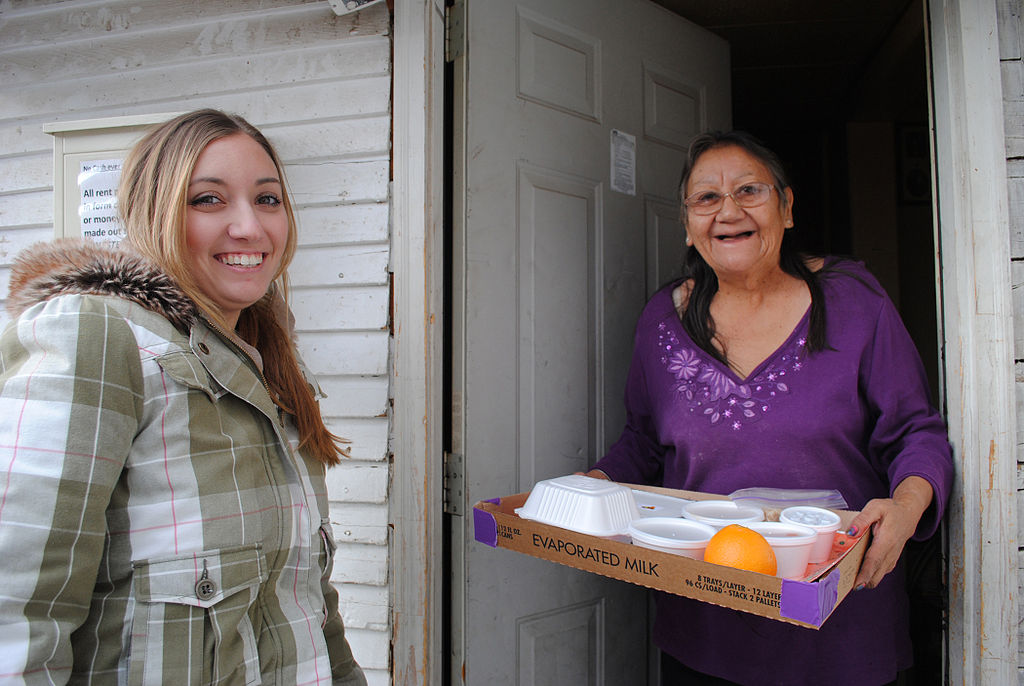AARP Hearing Center
Why Spending More For Meals on Wheels Would Cost Almost Nothing
By Futurity, October 17, 2013 03:15 PM
By David Orenstein
Expanding programs like Meals on Wheels would save 26 of 48 U.S. states money and would allow more seniors to stay in their own homes, research shows.

A new study reports that if every state in the lower 48 expanded the number of seniors receiving meals by just 1 percent, 1,722 more Medicaid recipients could avoid living in a nursing home and most states would experience a net annual savings from implementing the expansion.
Pennsylvania would see the greatest net savings - $5.7 million - as Medicaid costs for nursing home care dropped more than costs rose for delivering the additional meals. But every state is different. Florida would see a net cost of nearly $11.5 million instead.
Sign up for the AARP Money Matters newsletter
Overall, 26 states would see a net savings according to the analysis published in the October issue of the journal Health Affairs, while 22 would end up spending more.
The program would help seniors who live independently - except for meals - to remain in their homes, regardless of whether they are on Medicaid.
The study provides guidance for state policymakers as they consider the future of their home-delivered meals programs, which are conducted under the Older Americans Act, says Kali Thomas, an assistant professor in the School of Public Health at Brown University. "We wanted to provide a roadmap for people."
State by state
To do the study, Thomas and co-author Vincent Mor, professor of community health, looked at several key pieces of data, including how many seniors in each state receive home-delivered meals and how much it costs each state to provide those meals.
The researchers also looked at nursing home and Medicaid data to estimate the number of seniors that Medicaid maintains in nursing homes who are "low-care," meaning they may have the functional capabilities to live at home. Finally they looked at the per diem Medicaid pays in each state for seniors to live in nursing homes.
The results allowed them to estimate the incremental cost of providing meals to 1 percent more seniors in each state, the number of additional seniors on Medicaid who would no longer need to live in nursing homes, and how much less Medicaid would therefore spend in each state.
Across the country, the 1 percent expansion would bring meals to 392,594 more seniors at a cost of more than $117 million. Because 1,722 seniors would no longer have to live in nursing homes on Medicaid, total Medicaid savings would total $109 million.
The reason why the additional food delivery costs outstrip Medicaid savings nationwide, even though most states would save money on a net basis, is that in some very large states with relatively few low-care seniors or relatively low Medicaid per diems, food costs outweighed the resulting Medicaid savings on a relatively large scale.
"In states like California and Florida where a 1 percent increase in the 65+ population is a lot of people, it will cost those states a lot more to feed them," Thomas says.
Get discounts on health and wellness products and services with your AARP Member Advantages.
"Our analyses suggest that 26 states with high Medicaid nursing home per diem reimbursement rates, a large proportion of low-care (nursing home residents on Medicaid), and a relatively small population of older adults, could save money," the authors write.
More than money
States projected to lose money can opt to focus their efforts in ways that are more precise than an across-the-board expansion, says Thomas.
"We're not proposing that all states simply increase the proportion of age 65+ receiving meals by 1 percent. But if they were to target these vulnerable people who are at risk for nursing home placement they would likely see more savings. This is a program that has the potential to save states a lot of money if it's done correctly."
Policymakers should consider not only the fiscal implications of providing home-delivered meals, which the study quantifies, but also the impact on individual seniors, Thomas says. "The quality of life argument is really important, but it's not been shown, empirically."
The National Institute on Aging and the Agency for Healthcare Research and Quality funded the study.
David Orenstein is Science News Officer, Medicine, Life Sciences and Public Health, at Brown University
Photo: Katrina Heikkinen/Wikimedia Commons

Also of Interest
- Meals on Wheels Caught in Budget Food Fight
- Slideshow: 9 Nasty Things to Throw Away Today
- Shopping for health insurance? The health insurance marketplace is now open
- Join AARP: Savings, resources and news for your well-being
See the AARP home page for deals, savings tips, trivia and more































































